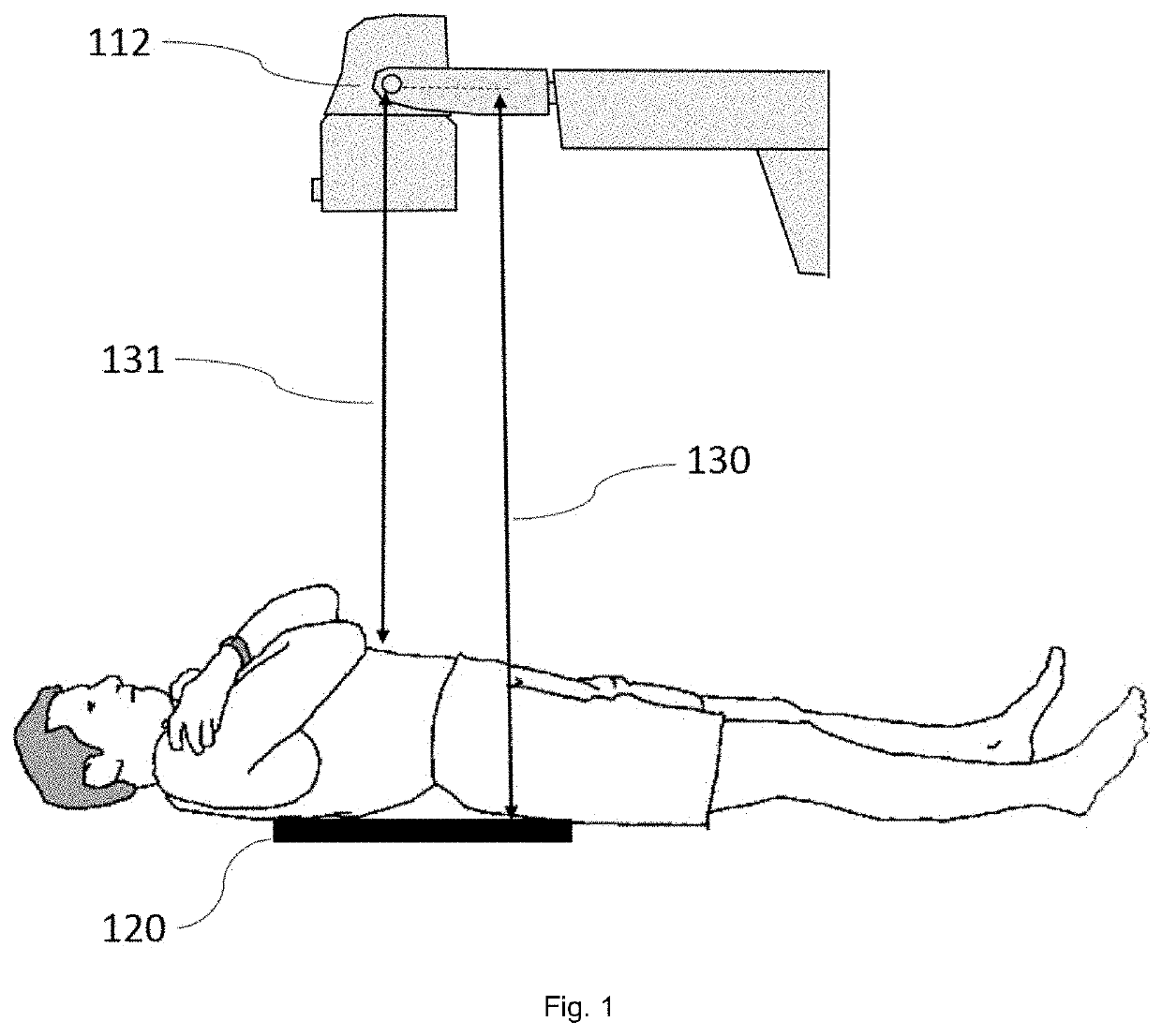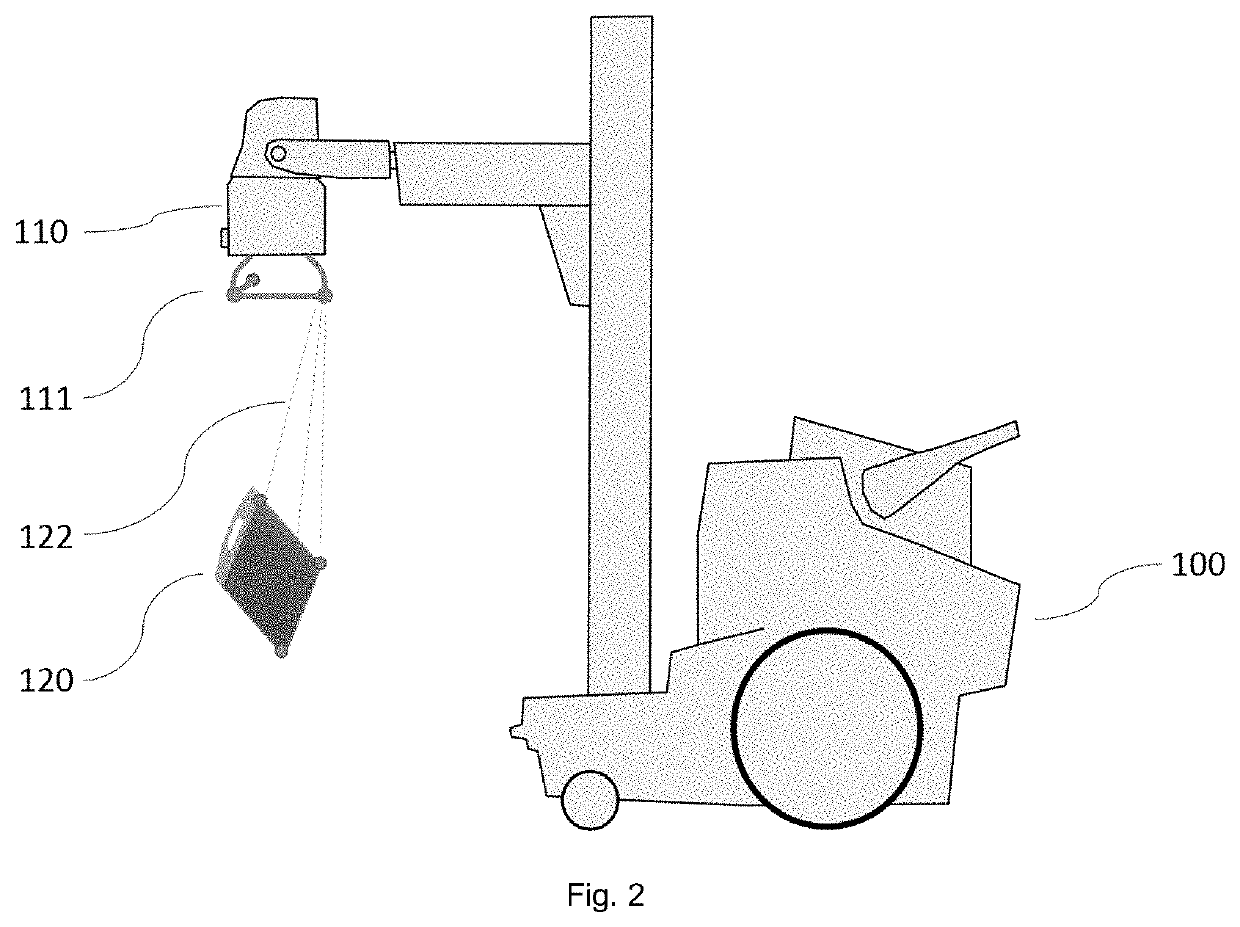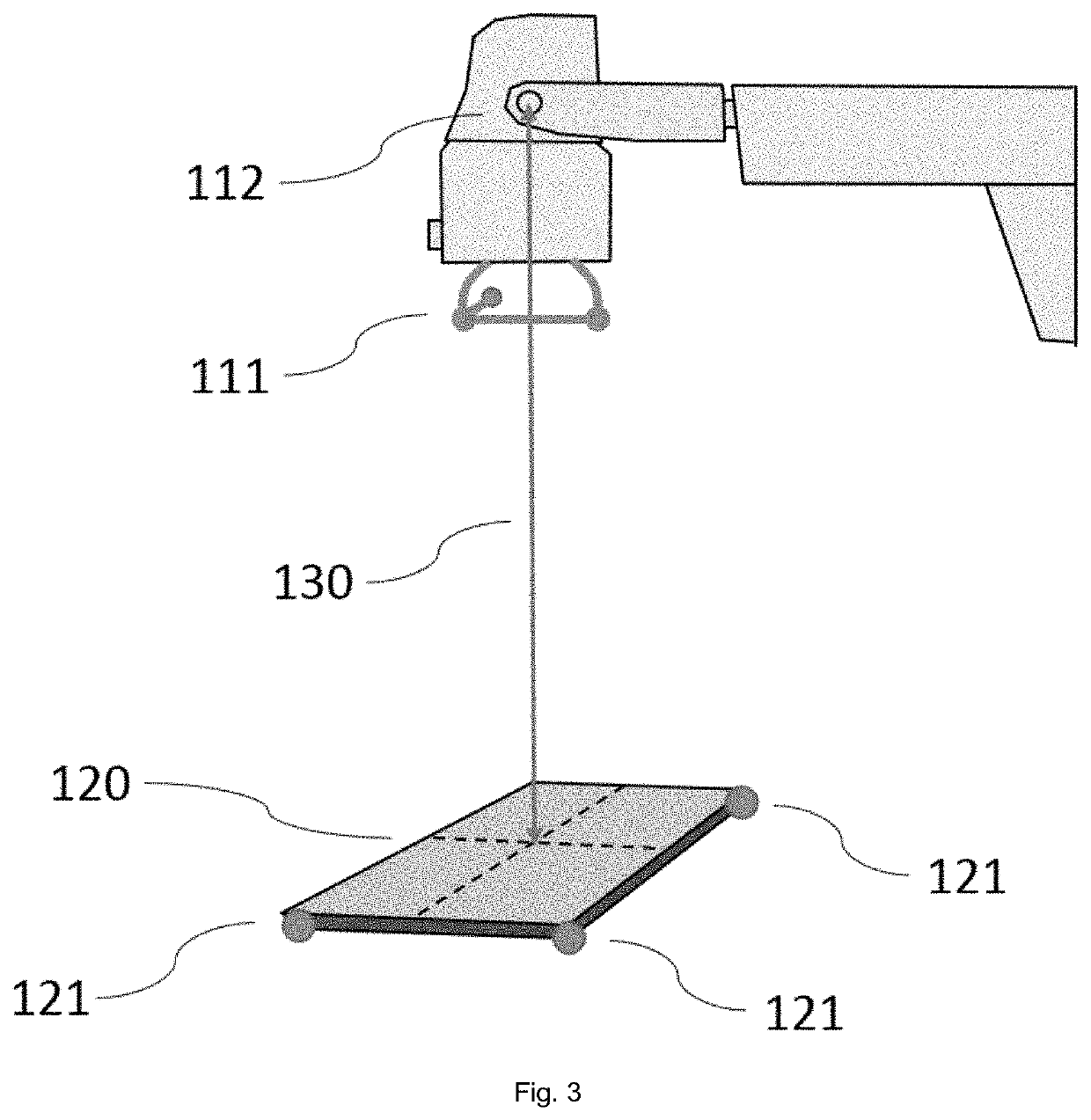Method and system for determining the sid and the thickness of a patient in a radiographic system
a radiographic system and thickness technology, applied in the field of sid measurement, can solve the problems of difficult determination of the exact position and orientation of the image detector relative to the x-ray source, difficult to directly determine the thickness of the patient, and less obvious to accurately determine the acquisition geometry. accurate and reliable results
- Summary
- Abstract
- Description
- Claims
- Application Information
AI Technical Summary
Benefits of technology
Problems solved by technology
Method used
Image
Examples
Embodiment Construction
[0027]A first embodiment of this invention is based on the use of a set of at least three signal generators, which are physically connected to an X-ray source assembly of a radiography system. The at least three signal generators are mechanically fixed to the X-ray source assembly in order to fix a reference coordinate system in space which is selected as the point from where the X-ray radiation originates and that determines the orientation of the X-ray beam. This virtual point is called the emission point of the X-ray source. At least three signal generators are required to determine the location and orientation of the reference coordinate system. Adding more signal generator elements may contribute to a better accuracy of the system, but is strictly speaking not required. The at least three signal generators are so arranged that they are spatially separated from each other (for instance located at positions around the X-ray source assembly) so to ensure that their generated signa...
PUM
 Login to View More
Login to View More Abstract
Description
Claims
Application Information
 Login to View More
Login to View More - R&D
- Intellectual Property
- Life Sciences
- Materials
- Tech Scout
- Unparalleled Data Quality
- Higher Quality Content
- 60% Fewer Hallucinations
Browse by: Latest US Patents, China's latest patents, Technical Efficacy Thesaurus, Application Domain, Technology Topic, Popular Technical Reports.
© 2025 PatSnap. All rights reserved.Legal|Privacy policy|Modern Slavery Act Transparency Statement|Sitemap|About US| Contact US: help@patsnap.com



